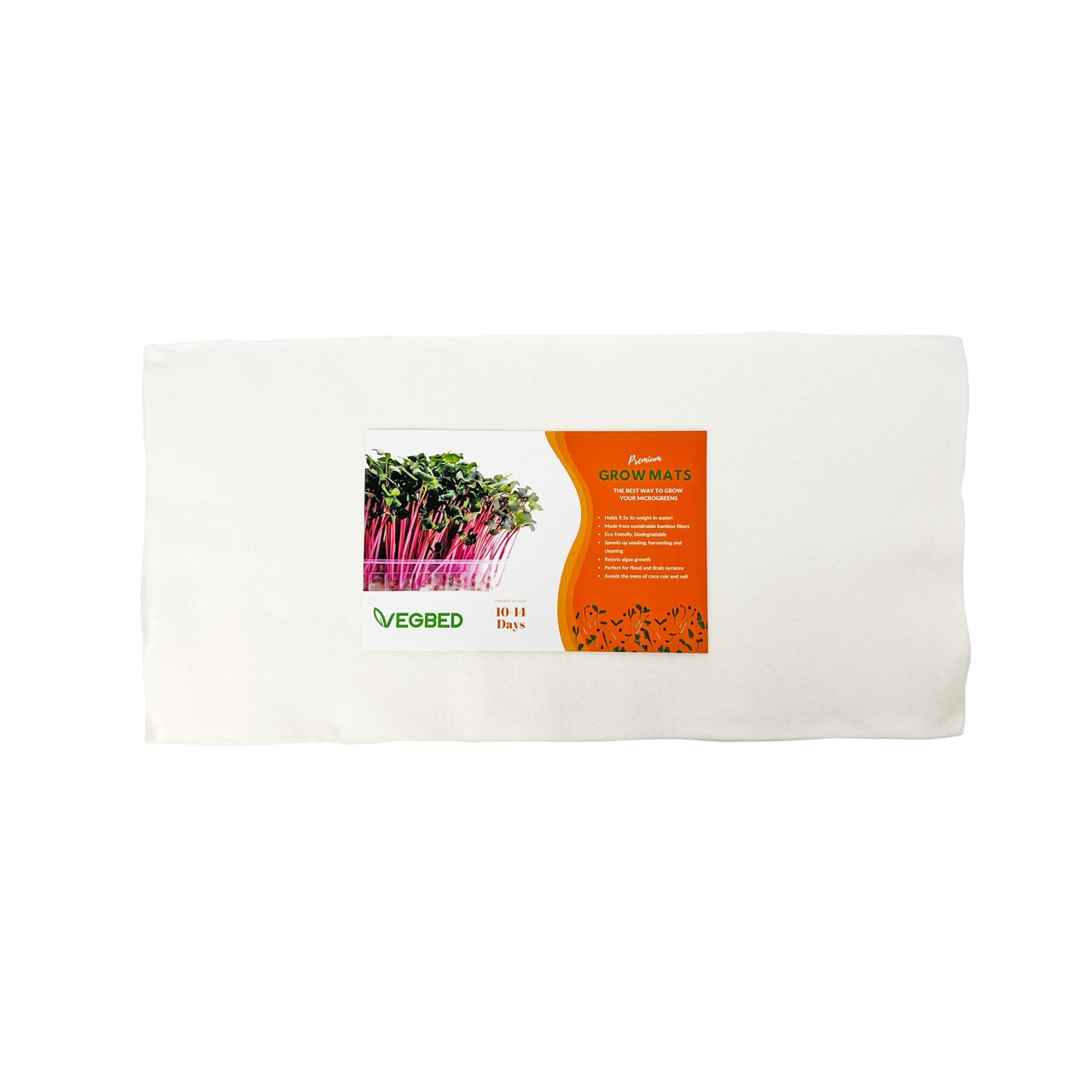Microgreens are a popular choice for home gardeners and commercial growers alike due to their quick growth cycle and high nutritional value. However, maximizing yields can be a challenge.
This comprehensive guide explores the top 5 advanced techniques and technologies to boost your microgreen yields, supplemented by detailed case studies of successful high-yield farms.
-
Optimal Seed Density
Sowing seeds at the optimal density is crucial for maximizing yields. Too sparse, and you’re not utilizing your growing space efficiently. Too dense, and you risk poor air circulation and mold growth.
Optimal seed density ensures that each microgreen has enough space to grow without competing too much for resources. This balance helps in achieving uniform growth and better yields. Using a consistent method for sowing, such as seeders or shakers, can help achieve this balance.
Advanced Tip: Use precise seeders or shakers to ensure even distribution. For example, aim for: - Small Seeds (e.g., broccoli, kale): 25-30 grams per 10x20 tray - Medium Seeds (e.g., radish, beet): 35-40 grams per 10x20 tray - Large Seeds (e.g., peas, sunflowers): 80-100 grams per 10x20 tray
Case Study: GreenLeaf Farms adjusted their seed densities based on these guidelines and reported a 20% increase in yields. They used a combination of manual and automated seeders to ensure even distribution and optimal density.
Success Story: True Leaf Market offers a variety of seed density guides and tools that help growers achieve optimal results. Their customers have reported significant yield improvements by following these guidelines.
-
Controlled Environment Agriculture (CEA)
Controlled Environment Agriculture (CEA) systems can significantly boost yields by optimizing growing conditions.
CEA systems allow growers to create and maintain ideal growing conditions year-round, regardless of external weather conditions. This technology helps in stabilizing the environment for microgreens, leading to more consistent and higher yields.
Advanced Tip: Invest in climate control technologies such as LED grow lights, automated irrigation systems, and climate control units to maintain optimal light, temperature, and humidity levels.
Case Study: Urban Greens, a commercial microgreen farm, implemented a fully automated CEA system and saw a 30% increase in yields along with more consistent crop quality. They utilized sensors and automated systems to maintain ideal growing conditions.
Success Story: BrightFarms uses CEA to grow microgreens and other produce. Their greenhouses are equipped with advanced climate control systems, resulting in higher yields and reduced resource usage. They have successfully expanded their operations across multiple states.
-
Hydroponic and Aeroponic Systems
Hydroponic and aeroponic systems eliminate the need for soil, allowing for more efficient nutrient delivery and water usage.
Hydroponic and aeroponic systems provide a soilless growing environment where nutrients are delivered directly to the plant roots. This method can increase growth rates and yields by optimizing the nutrient and water supply.
Advanced Tip: Choose a hydroponic system with a nutrient film technique (NFT) or a deep water culture (DWC) setup. For aeroponics, ensure fine mist nozzles provide adequate aeration and nutrient delivery.
Case Study: AeroFarms, a pioneer in aeroponic farming, achieved yields up to 390 times higher per square foot compared to traditional farming methods by using aeroponic systems. Their vertical farming approach maximizes space and efficiency.
Success Story: Gotham Greens utilizes hydroponic systems in urban greenhouses to grow microgreens and other produce. Their innovative approach has led to high yields and sustainable production practices, making them a leader in urban agriculture.
-
Nutrient Management
Proper nutrient management is essential for healthy and high-yielding microgreens.
Microgreens require specific nutrients at different stages of growth. Starting with a nutrient-rich solution around day 10-14 ensures that the plants receive the necessary elements for optimal growth and yield.
Advanced Tip: Use a balanced, water-soluble nutrient solution specifically formulated for microgreens. Start adding nutrients around day 10-14 of growth to support robust development.
Case Study: NutriGreen Farms optimized their nutrient regimen and reported a 25% increase in yields. They conducted regular nutrient solution tests to ensure optimal levels of essential elements and adjusted their feeding schedules accordingly.
Success Story: General Hydroponics provides nutrient solutions tailored for microgreens. Their products have been used by growers worldwide to achieve consistent and high-quality yields. Customer feedback highlights the importance of proper nutrient management for success.
-
Integrated Pest Management (IPM)
Implementing Integrated Pest Management (IPM) strategies can help maintain plant health and maximize yields.
IPM focuses on using a combination of methods to control pests and diseases. This approach minimizes the use of chemicals and promotes a healthier growing environment, leading to better yields.
Advanced Tip: Use a combination of biological controls (e.g., beneficial insects), physical barriers (e.g., netting), and organic treatments to manage pests and diseases.
Case Study: FreshSprout Farms reduced crop losses by 15% after adopting an IPM approach. They noted fewer instances of mold and pest infestations, leading to healthier and more productive crops. Their IPM strategy included regular monitoring and the use of natural predators.
Success Story: Biobest Group specializes in biological pest control solutions. Their products have helped microgreen growers manage pests effectively without harmful chemicals, leading to healthier crops and higher yields.
Conclusion
By implementing these advanced growing techniques and technologies, you can significantly boost your microgreen yields. From optimizing seed density and utilizing controlled environment agriculture to adopting hydroponic systems, nutrient management, and integrated pest management, these strategies offer a comprehensive approach to achieving high yields.
Ready to take your microgreen growing to the next level? Share your experiences and tips in the comments below, and let’s grow together!



